
Official Edgar Rice Burroughs Tribute and Weekly Webzine Site Since 1996 ~ Over 15,000 Web Pages in Archive Volume 7073 |

Official Edgar Rice Burroughs Tribute and Weekly Webzine Site Since 1996 ~ Over 15,000 Web Pages in Archive Volume 7073 |
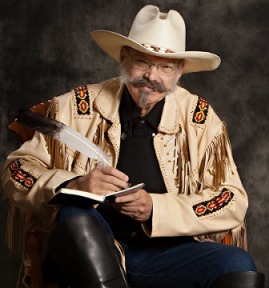
We see William H. Bonney, Henry McCarty, Henry Antrim (Antrim was his step-father’s name), Billy the Kid, small for his age pictured at Pete Maxwell’s ranch, formerly Fort Sumner (aka Bosque Redondo) in a bib front shirt with anchor design, vest, crumpled hat, and an awkward sweater placed over his shoulders against the cold and wind by a Mexican woman.The whole is a tin-type image, which reversed the image, leading folks to think Billy was left handed. He had enough troubles without that. Pete was the son of Lucien Maxwell who owned, until he sold it, most of northeastern New Mexico, the largest landholding in the United States. Lucien bought Fort Sumner and Billy stands in the breezeway of a cavalry barracks. It was here at Pete’s ranch that one day Pat Garret would shoot him without laying him to rest. There’s a grave nearby with his name on the headstone but many believe he isn’t there.
Billy grew up in Silver City, New Mexico Territory, and there his mother died, his step-father abandoned him, he got in trouble with the law, and finally, he escaped by crawling up the hole where the woodstove pipe passed through the roof. He fled to Arizona where folks called him the Kid and settled near Fort Grant.
Fort Grant (Dec 19, 1872 to Oct 4, 1905) is not Camp Grant (Oct 31, 1865 to March 29, 1873) where the massacre of Aravaipa Apache Indians occurred. Fort Grant is at the foot of Mount Graham in the Sulpher Springs Valley. Camp Grant is over a range of mountains to the west on the San Pedro River.
Billy sought work at the Sierra Bonita Ranch owned by Col. Henry Hooker. Hooker was a beef contractor to the Indian reservations and Fort Grant and a professed “friend of Cochise.”
If you saw the movie Tombstone it was at Hooker’s ranch that Doc Holliday sought refuge before arising from his bed to kill Johnny Ringo. The posse really did rest at the Sierra Bonita, whose original buildings are still in use. Many question whether or not Doc shot Ringo.
Billy worked briefly as a cowboy. Hooker’s foreman, William Whelan, hired the Kid but soon had to let him go. “He was a light-weight.” Billy was unable to perform the labor required of the men. He bounced from ranch to ranch before settling in at Bonita, three miles from the flagpole at Fort Grant. It was three miles because military reservations were measured out three miles on all sides from the flagpole and civilian businesses other than the sutler’s store (precursor to the PX) and the Hotel de Luna were not allowed on post.
In 1877, Bonita was a widely scattered assortment of adobe and clapboard civilian enterprises dependent on Army payroll and the roundup. Milton McDowell owned a store. George Atkins ran a cantina where food of dubious quality was available along with equally dubious booze. He also operated a dancehall. Lou Elliot had another. One supposed some of the dancing may have been done horizontally. Francis P. “Windy” Cahill was the blacksmith. Finally, George McKittrick operated The Hog Ranch, a flourishing red-light district. One can only imagine the source of the term “hog ranch” in wide use by soldiers of the era.
Not big enough or strong enough for regular ranching, Billy turned to gambling to make a living. Rustling would come later. If Billy was 21 in 1881, he would have been 16 or 17 when he lived in Bonita. Perhaps he had yet to get his growth, though being called the Kid is a sign that however much that might have been, it wasn’t much. He remained a small man. The Kid, calling himself William H. Bonney, developed his manual dexterity at the card table where work callouses would have been a disadvantage. He built up quite a reputation as a gambler and may have run a sideline involving ladies.
Big, powerful blacksmith, Windy Cahill was a bully and started abusing the small boy. He would throw Billy to the floor for laughs, ruffle his hair insulting the lad, slap Billy’s face and practice any humiliation he could dream up. Then Windy went too far. He called Billy a pimp and the enraged boy attacked him.
It was a pretty one-sided affair. Billy called the blacksmith a son of a bitch and they started wrestling with the Kid trying to throw the big man to the ground. Instead Windy threw Billy three times making the Kid even angrier. Cahill jumped on the boy pinning him to the filthy floor.
“You’re hurting me. Let me up,” cried the Kid.
“I want to hurt you,” replied the grinning bully, “that’s why I got you down.”
Billy worked an arm free and grasped his .45 six-shooter managing to draw it from his belt. Billy fired many would say in self-defense or at least self-preservation. He didn’t wait to see if a coroner’s inquest would agree. Instead he ran for the door and grabbing the fastest horse rode hard for New Mexico where he was already a wanted man albeit on the lesser charges of stealing food and a Chinaman’s laundry.
Dying Cahill said:Billy was gone from Arizona, but Fort Grant would remain as part of a network of posts set to control the Chiricahua Apache. By the 1880s, Fort Grant was considered one of the most desirable stations in Arizona. Perhaps the cool breeze from Mount Graham was one of the reasons. Or perhaps this is simply testament to how undesirable posts in Arizona were.
“I, Frank P. Cahill, being convinced that I am about to die do make the following as my final statement. Yesterday, August 17, 1877, I had some trouble with Henry Antrem [sic] otherwise known as Kid, during which he shot me. I had called him a pimp and he had called me a son of a bitch. We then took hold of each other. I did not hit him I think. Saw him go for his pistol and tried to get hold of it but could not and he shot me in the belly.”In 1896, Troop B of the 7th U.S. Cavalry was stationed at Grant and with it came Edgar Rice Burroughs. This is where he gathered material for his books on the Apaches and why the John Carter series begins in the cave of an Apache medicine man in Arizona.
In 1905, the drought was severe. The horses were taken to water seven miles away. Finally, the post was transferred to caretaker status. The caretaker was Colonel William F. Stewart of the Coast Artillery. Fort Grant officially became a Coast Artillery post having either one very long range gun or perhaps anti-submarine nets deployed on the San Pedro River.
In any event, an end as ignominious for a cavalry post as Windy Cahill’s.
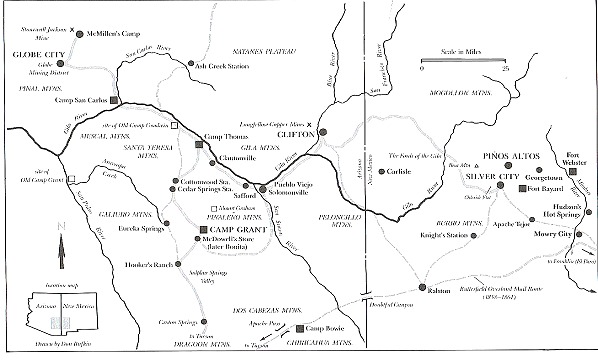
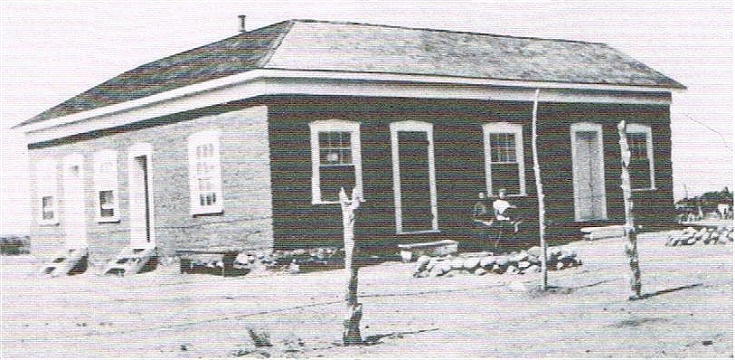
Hotel de Luna
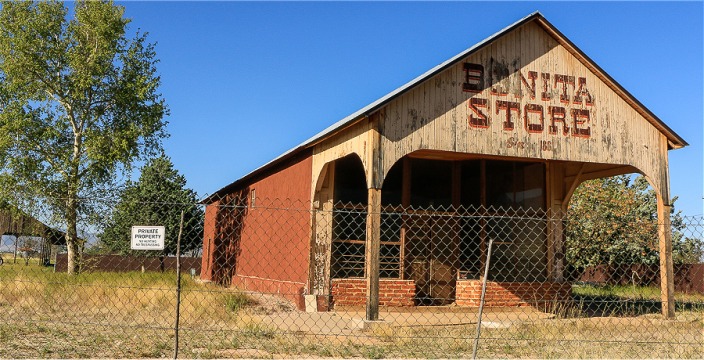
Bonita Store: Onetime Saloon and Gambling House Where Billy the
Kid Killed his First Man
![]()
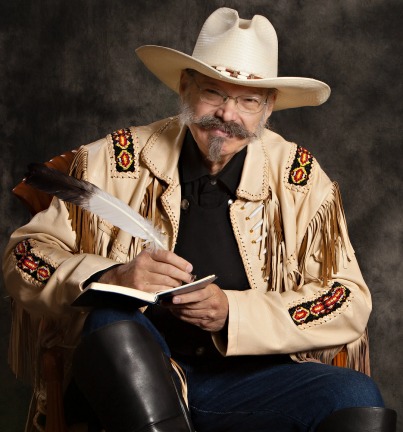
Doug Hocking
Writer and Speaker
![]()
Hocking Books About the American Southwest
History ~ Biography ~ Native American ~ Historical
Fiction
Santa Fe Trail ~ Mystery ~ Thriller ~ Short Sto
Available at:
https://doughocking.com
![]()
![]()
ERBzine References
Billy the Kid Photo Splash Bars
![]()
From the Hillman Travel Adventures Site
www.hillmanweb.com/book/travel
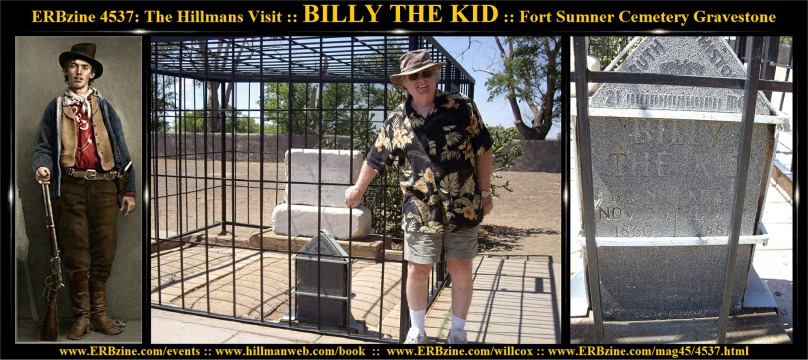
www.erbzine.com/mag45/4537.html
\![]()
From the Hillman ERB Wild West
and Arizona Sites
www.ERBzine.com/wildwest
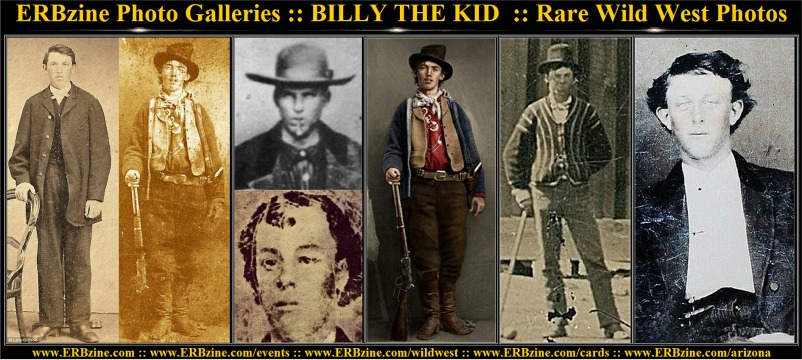
NOTE: Doug Hocking Disputes the Authenticity of Most
of These Bill the Kid Photos.
Since they are featured all across the Web in various
articles they are included here for interest sake.
![]()
THE SECOND CONFIRMED IMAGE OF BILLY THE KID
From left to right: Richard Brewer, Bill the Kid,
Fred Waite and Henry Brown - all of whom were wanted men.
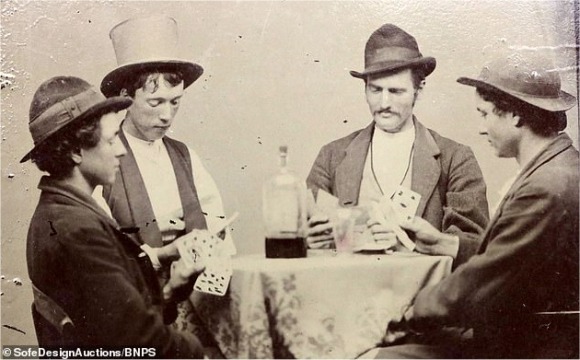
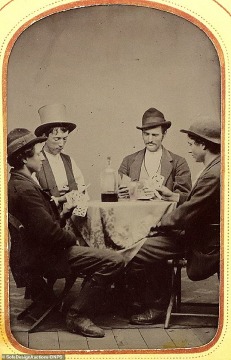
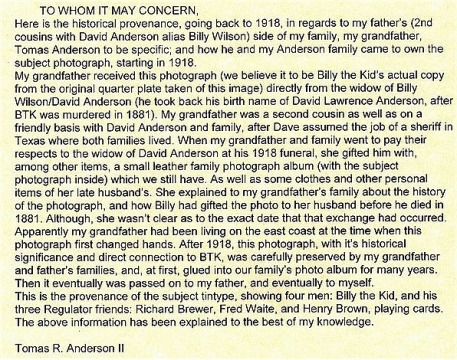
Source: Daily
Mail ~ November 25, 2019
This black and white wet collodion tin type image
is thought to date back to around 1877
and is only the second confirmed image of the notorious
American outlaw.
This photo has been kept in the same family for over
a century,
after it was given to the vendor's grandfather by
the widow of a Billy Wilson,
a gang member and friend of Billy the Kid
The photo now for sale has never been made public
before
and has been kept in the same family for over a century.
![]()
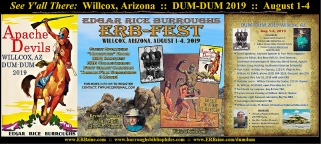
Visit our ERBzine 20-Page Coverage of the
2019 Celebration of
Edgar Rice Burroughs in Arizona
www.ERBzine.com/mag70/7059.html
|
Willcox: Intro/Contents |
2. Goodie Bag |
3. Journey and Arrival |
4. Exploring Willcox |
5. Huckster Room |
|
6. Presentations |
7. Exploring Willcox II |
8. Fort Grant I |
9. Fort Grant II |
10. Fort Grant III |
|
11. Wind Up |
12. Rex Allen Museum |
13. Marty Robbins Museum |
14. Chiricahua Museum |
15. Billy the Kid |
|
16. Willcox History I |
17. Willcox History II |
18. Willcox History III |
19. Meet Kathy Klump |
20. ERB at Fort Grant |
![]()

![]()
BILL
HILLMAN
Visit
our thousands of other sites at:
BILL
AND SUE-ON HILLMAN ECLECTIC STUDIO
ERB
Text, ERB Images and Tarzan® are ©Edgar Rice Burroughs, Inc.-
All Rights Reserved.
All
Original Work ©1996-2019 by Bill Hillman and/or Contributing Authors/Owners
No
part of this web site may be reproduced without permission from the respective
owners.